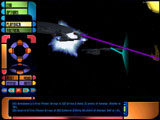 As a Star Trek fan, I have to say that most of the computer games based in
the Star Trek universe have been sorely lacking in one respect or another. When I first
heard that there was yet another game coming out, I was not very excited at first. After
learning more about it, however, my interest was piqued. Here was a new concept for a Star
Trek game: a turn-based strategy game similar to Master of Orion; moreover, it was being
developed by Microprose, the company that produced MOO and MOO2. Since MOO was and still
is one of my favorite games of all time, I began to get quite interested in Birth of the
Federation. As a Star Trek fan, I have to say that most of the computer games based in
the Star Trek universe have been sorely lacking in one respect or another. When I first
heard that there was yet another game coming out, I was not very excited at first. After
learning more about it, however, my interest was piqued. Here was a new concept for a Star
Trek game: a turn-based strategy game similar to Master of Orion; moreover, it was being
developed by Microprose, the company that produced MOO and MOO2. Since MOO was and still
is one of my favorite games of all time, I began to get quite interested in Birth of the
Federation.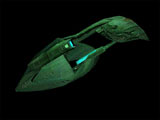 In BoTF, players choose from one of 5 races –
Federation, Klingon, Romulan, Ferengi or Cardassian, and must build their empires by
controlling star systems. If the system is unoccupied it can be colonized, but many times
the best systems are occupied by minor races and must be either subjugated or convinced to
join your empire. Empires build ships to explore, colonize and defend star systems and
establish outposts allowing exploration deeper into space. Star systems are your main
production facilities but must be populated with farms, power plants, factories and
laboratories before they will produce. Other structures are available, such as shield
generators, orbital batteries, shipyards, trade centers, and even special projects that
convey unique benefits on the system that builds them. However, just like MOO, as the
number of systems you control grows, it becomes a chore to manage every element of
production in each system. Two things help relieve the tedium: a production queue of up to
four items and an automatic build feature that allows the computer to select structures to
be built. Unfortunately, the computer is not the best manager, so you’ll find
yourself checking up on it frequently to make sure your systems develop properly. In BoTF, players choose from one of 5 races –
Federation, Klingon, Romulan, Ferengi or Cardassian, and must build their empires by
controlling star systems. If the system is unoccupied it can be colonized, but many times
the best systems are occupied by minor races and must be either subjugated or convinced to
join your empire. Empires build ships to explore, colonize and defend star systems and
establish outposts allowing exploration deeper into space. Star systems are your main
production facilities but must be populated with farms, power plants, factories and
laboratories before they will produce. Other structures are available, such as shield
generators, orbital batteries, shipyards, trade centers, and even special projects that
convey unique benefits on the system that builds them. However, just like MOO, as the
number of systems you control grows, it becomes a chore to manage every element of
production in each system. Two things help relieve the tedium: a production queue of up to
four items and an automatic build feature that allows the computer to select structures to
be built. Unfortunately, the computer is not the best manager, so you’ll find
yourself checking up on it frequently to make sure your systems develop properly.
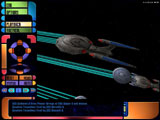 Graphically, the game is very nice. The main galactic map can show either the
whole galaxy or a smaller section in greater detail. Icons representing systems, ships,
trade routes and galactic anomalies are clear and easy to recognize. The game interface
changes depending on which race you play, from the familiar Federation design to the alien
Romulan and Cardassian layouts. To prevent clutter on the map, various groups of
information can be toggled on and off, so, for example, you can display only military or
trade information if you desire. The ships are depicted quite nicely, from the Federation
cruisers to the Cardassian warships. The sounds and voices are also well done, adding to
the Star Trek atmosphere the game attempts to create. The interface is clean, placing all
the controls in logical groups and making options easy to find and use. I particularly
like the screensaver, which kicks in after a few minutes of inactivity and shows large
rotating views of the different ships in the game. Graphically, the game is very nice. The main galactic map can show either the
whole galaxy or a smaller section in greater detail. Icons representing systems, ships,
trade routes and galactic anomalies are clear and easy to recognize. The game interface
changes depending on which race you play, from the familiar Federation design to the alien
Romulan and Cardassian layouts. To prevent clutter on the map, various groups of
information can be toggled on and off, so, for example, you can display only military or
trade information if you desire. The ships are depicted quite nicely, from the Federation
cruisers to the Cardassian warships. The sounds and voices are also well done, adding to
the Star Trek atmosphere the game attempts to create. The interface is clean, placing all
the controls in logical groups and making options easy to find and use. I particularly
like the screensaver, which kicks in after a few minutes of inactivity and shows large
rotating views of the different ships in the game.
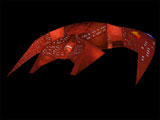 One area where BoTF surpasses MOO is diplomacy. With the addition of minor
races, there is more to do than sign treaties you know will eventually be broken.
Diplomacy options range from friendship treaties to alliances and full membership in your
empire. You must have a friendship treaty before trade routes can be established. The
various races have different inclinations towards the major powers, so a race that is icy
towards the Federation may be amiable towards the Klingons. You can overcome a negative
attitude with monetary gifts, but it gets expensive quick. The Federation has a natural
advantage at diplomacy and can more easily establish treaties with minor races, while the
Cardassians and Romulans are more likely to subjugate them into their empires. Races also
respond to events that happen during the game, so if you have a treaty with a race and one
of your other systems is captured, that race will be more dubious of your ability to
defend your empire and may even rebel. This interaction adds a lot of flavor and intrigue
to the game that was lacking from MOO and MOO2. One area where BoTF surpasses MOO is diplomacy. With the addition of minor
races, there is more to do than sign treaties you know will eventually be broken.
Diplomacy options range from friendship treaties to alliances and full membership in your
empire. You must have a friendship treaty before trade routes can be established. The
various races have different inclinations towards the major powers, so a race that is icy
towards the Federation may be amiable towards the Klingons. You can overcome a negative
attitude with monetary gifts, but it gets expensive quick. The Federation has a natural
advantage at diplomacy and can more easily establish treaties with minor races, while the
Cardassians and Romulans are more likely to subjugate them into their empires. Races also
respond to events that happen during the game, so if you have a treaty with a race and one
of your other systems is captured, that race will be more dubious of your ability to
defend your empire and may even rebel. This interaction adds a lot of flavor and intrigue
to the game that was lacking from MOO and MOO2.
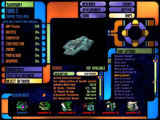 As in MOO, research is divided into six areas – Biotech, Computer,
Construction, Energy, Propulsion and Weapons. Each area has different discoveries for
every level achieved. Your total research pool, determined by the number of research labs
in your empire, can be allocated as desired to each area, and new technologies allow
different advancements, such as new ship types and increased production. The intelligence
system is also similar to MOO; total capacity is determined by your databanks, and can be
allocated to internal security, espionage or sabotage. Agents for each empire can choose
from general, military, science or economic specialties, and they gather intelligence and
status reports on enemy empires for you to use. As in MOO, research is divided into six areas – Biotech, Computer,
Construction, Energy, Propulsion and Weapons. Each area has different discoveries for
every level achieved. Your total research pool, determined by the number of research labs
in your empire, can be allocated as desired to each area, and new technologies allow
different advancements, such as new ship types and increased production. The intelligence
system is also similar to MOO; total capacity is determined by your databanks, and can be
allocated to internal security, espionage or sabotage. Agents for each empire can choose
from general, military, science or economic specialties, and they gather intelligence and
status reports on enemy empires for you to use.
When ships of different empires encounter each other, tactical combat often results.
During combat, the game switches to the tactical combat screen. Each player’s ships
are grouped by type, and any support structures such as planets and outposts are shown.
The graphics here are excellent – ships are shown correctly sized and are
recognizable by type. Each group can be given different orders, such as charge, retreat
and circle, and will carry out those orders until they are changed. There are several
different views you can select, including top-down, chase and from target, making battles
more interesting. A replay function allows you to play back encounters for another look.
Combat flows quite well on this screen and is easy to follow, and is actually an
improvement over MOO.
The enemy AI is pretty good overall, especially on the harder levels, where the races
begin to really exploit their various advantages. An elaborate handicapping system exists,
allowing players to start each race at a different difficulty and tech level if desired.
This feature is especially useful in multiplayer games, allowing players of different
skill levels to compete more evenly in the same game.
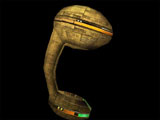 The only real complaint I have with BotF is one that plagued both MOO and
MOO2 – the game tends to bog down when playing in a large galaxy. I assume that this
is due to the massive amount of information that the computer must generate and track each
turn, but my feeling is that in a turn-based game the computer should be able to take care
of all housekeeping transparently when running on a reasonably powerful machine. Still,
the lag is not bad and doesn’t noticeably affect gameplay. The only real complaint I have with BotF is one that plagued both MOO and
MOO2 – the game tends to bog down when playing in a large galaxy. I assume that this
is due to the massive amount of information that the computer must generate and track each
turn, but my feeling is that in a turn-based game the computer should be able to take care
of all housekeeping transparently when running on a reasonably powerful machine. Still,
the lag is not bad and doesn’t noticeably affect gameplay.
Star Trek – Birth of the Federation provides a fresh update to a classic strategy
game. Not only will the game appeal to Star Trek fans, but also to hardcore strategy
gamers who enjoy space based games and empire building. Finally, there is a Star Trek game
that is worthy of the name.
--Derek Meyer |

 As a Star Trek fan, I have to say that most of the computer games based in
the Star Trek universe have been sorely lacking in one respect or another. When I first
heard that there was yet another game coming out, I was not very excited at first. After
learning more about it, however, my interest was piqued. Here was a new concept for a Star
Trek game: a turn-based strategy game similar to Master of Orion; moreover, it was being
developed by Microprose, the company that produced MOO and MOO2. Since MOO was and still
is one of my favorite games of all time, I began to get quite interested in Birth of the
Federation.
As a Star Trek fan, I have to say that most of the computer games based in
the Star Trek universe have been sorely lacking in one respect or another. When I first
heard that there was yet another game coming out, I was not very excited at first. After
learning more about it, however, my interest was piqued. Here was a new concept for a Star
Trek game: a turn-based strategy game similar to Master of Orion; moreover, it was being
developed by Microprose, the company that produced MOO and MOO2. Since MOO was and still
is one of my favorite games of all time, I began to get quite interested in Birth of the
Federation. In BoTF, players choose from one of 5 races –
Federation, Klingon, Romulan, Ferengi or Cardassian, and must build their empires by
controlling star systems. If the system is unoccupied it can be colonized, but many times
the best systems are occupied by minor races and must be either subjugated or convinced to
join your empire. Empires build ships to explore, colonize and defend star systems and
establish outposts allowing exploration deeper into space. Star systems are your main
production facilities but must be populated with farms, power plants, factories and
laboratories before they will produce. Other structures are available, such as shield
generators, orbital batteries, shipyards, trade centers, and even special projects that
convey unique benefits on the system that builds them. However, just like MOO, as the
number of systems you control grows, it becomes a chore to manage every element of
production in each system. Two things help relieve the tedium: a production queue of up to
four items and an automatic build feature that allows the computer to select structures to
be built. Unfortunately, the computer is not the best manager, so you’ll find
yourself checking up on it frequently to make sure your systems develop properly.
In BoTF, players choose from one of 5 races –
Federation, Klingon, Romulan, Ferengi or Cardassian, and must build their empires by
controlling star systems. If the system is unoccupied it can be colonized, but many times
the best systems are occupied by minor races and must be either subjugated or convinced to
join your empire. Empires build ships to explore, colonize and defend star systems and
establish outposts allowing exploration deeper into space. Star systems are your main
production facilities but must be populated with farms, power plants, factories and
laboratories before they will produce. Other structures are available, such as shield
generators, orbital batteries, shipyards, trade centers, and even special projects that
convey unique benefits on the system that builds them. However, just like MOO, as the
number of systems you control grows, it becomes a chore to manage every element of
production in each system. Two things help relieve the tedium: a production queue of up to
four items and an automatic build feature that allows the computer to select structures to
be built. Unfortunately, the computer is not the best manager, so you’ll find
yourself checking up on it frequently to make sure your systems develop properly.
 Graphically, the game is very nice. The main galactic map can show either the
whole galaxy or a smaller section in greater detail. Icons representing systems, ships,
trade routes and galactic anomalies are clear and easy to recognize. The game interface
changes depending on which race you play, from the familiar Federation design to the alien
Romulan and Cardassian layouts. To prevent clutter on the map, various groups of
information can be toggled on and off, so, for example, you can display only military or
trade information if you desire. The ships are depicted quite nicely, from the Federation
cruisers to the Cardassian warships. The sounds and voices are also well done, adding to
the Star Trek atmosphere the game attempts to create. The interface is clean, placing all
the controls in logical groups and making options easy to find and use. I particularly
like the screensaver, which kicks in after a few minutes of inactivity and shows large
rotating views of the different ships in the game.
Graphically, the game is very nice. The main galactic map can show either the
whole galaxy or a smaller section in greater detail. Icons representing systems, ships,
trade routes and galactic anomalies are clear and easy to recognize. The game interface
changes depending on which race you play, from the familiar Federation design to the alien
Romulan and Cardassian layouts. To prevent clutter on the map, various groups of
information can be toggled on and off, so, for example, you can display only military or
trade information if you desire. The ships are depicted quite nicely, from the Federation
cruisers to the Cardassian warships. The sounds and voices are also well done, adding to
the Star Trek atmosphere the game attempts to create. The interface is clean, placing all
the controls in logical groups and making options easy to find and use. I particularly
like the screensaver, which kicks in after a few minutes of inactivity and shows large
rotating views of the different ships in the game.
 One area where BoTF surpasses MOO is diplomacy. With the addition of minor
races, there is more to do than sign treaties you know will eventually be broken.
Diplomacy options range from friendship treaties to alliances and full membership in your
empire. You must have a friendship treaty before trade routes can be established. The
various races have different inclinations towards the major powers, so a race that is icy
towards the Federation may be amiable towards the Klingons. You can overcome a negative
attitude with monetary gifts, but it gets expensive quick. The Federation has a natural
advantage at diplomacy and can more easily establish treaties with minor races, while the
Cardassians and Romulans are more likely to subjugate them into their empires. Races also
respond to events that happen during the game, so if you have a treaty with a race and one
of your other systems is captured, that race will be more dubious of your ability to
defend your empire and may even rebel. This interaction adds a lot of flavor and intrigue
to the game that was lacking from MOO and MOO2.
One area where BoTF surpasses MOO is diplomacy. With the addition of minor
races, there is more to do than sign treaties you know will eventually be broken.
Diplomacy options range from friendship treaties to alliances and full membership in your
empire. You must have a friendship treaty before trade routes can be established. The
various races have different inclinations towards the major powers, so a race that is icy
towards the Federation may be amiable towards the Klingons. You can overcome a negative
attitude with monetary gifts, but it gets expensive quick. The Federation has a natural
advantage at diplomacy and can more easily establish treaties with minor races, while the
Cardassians and Romulans are more likely to subjugate them into their empires. Races also
respond to events that happen during the game, so if you have a treaty with a race and one
of your other systems is captured, that race will be more dubious of your ability to
defend your empire and may even rebel. This interaction adds a lot of flavor and intrigue
to the game that was lacking from MOO and MOO2.
 As in MOO, research is divided into six areas – Biotech, Computer,
Construction, Energy, Propulsion and Weapons. Each area has different discoveries for
every level achieved. Your total research pool, determined by the number of research labs
in your empire, can be allocated as desired to each area, and new technologies allow
different advancements, such as new ship types and increased production. The intelligence
system is also similar to MOO; total capacity is determined by your databanks, and can be
allocated to internal security, espionage or sabotage. Agents for each empire can choose
from general, military, science or economic specialties, and they gather intelligence and
status reports on enemy empires for you to use.
As in MOO, research is divided into six areas – Biotech, Computer,
Construction, Energy, Propulsion and Weapons. Each area has different discoveries for
every level achieved. Your total research pool, determined by the number of research labs
in your empire, can be allocated as desired to each area, and new technologies allow
different advancements, such as new ship types and increased production. The intelligence
system is also similar to MOO; total capacity is determined by your databanks, and can be
allocated to internal security, espionage or sabotage. Agents for each empire can choose
from general, military, science or economic specialties, and they gather intelligence and
status reports on enemy empires for you to use.
 The only real complaint I have with BotF is one that plagued both MOO and
MOO2 – the game tends to bog down when playing in a large galaxy. I assume that this
is due to the massive amount of information that the computer must generate and track each
turn, but my feeling is that in a turn-based game the computer should be able to take care
of all housekeeping transparently when running on a reasonably powerful machine. Still,
the lag is not bad and doesn’t noticeably affect gameplay.
The only real complaint I have with BotF is one that plagued both MOO and
MOO2 – the game tends to bog down when playing in a large galaxy. I assume that this
is due to the massive amount of information that the computer must generate and track each
turn, but my feeling is that in a turn-based game the computer should be able to take care
of all housekeeping transparently when running on a reasonably powerful machine. Still,
the lag is not bad and doesn’t noticeably affect gameplay.